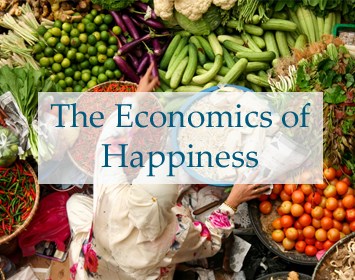Inauguration 2017 Special Coverage w/ Angela Davis, Naomi Klein, Ralph Nader & More
Menu

Special coverage in the Trump Era
From Public Citizen's Corporate Presidency site: "44 Trump administration officials have close ties to the Koch brothers and their network of political groups, particularly Vice President Mike Pence, White House Legislative Affairs Director Marc Short, EPA Administrator Scott Pruitt and White House budget director Mick Mulvaney."
Dark Money author Jane Mayer on The Dangers of President Pence, New Yorker, Oct. 23 issue on-line
Can Time Inc. Survive the Kochs? November 28, 2017 By Jane Mayer
..."This year, among the Kochs’ aims is to spend a projected four hundred million dollars in contributions from themselves and a small group of allied conservative donors they have assembled, to insure Republican victories in the 2018 midterm elections. Ordinarily, political reporters for Time magazine would chronicle this blatant attempt by the Kochs and their allies to buy political influence in the coming election cycle. Will they feel as free to do so now?"...
"Democracy in Chains: The Deep History of the Radical Right’s Stealth Plan for America" see: our site, and George Monbiot's essay on this key book by historian Nancy MacLean.
Full interview with The New Yorker’s Jane Mayer March 29, 2017, Democracy Now! about her article, "The Reclusive Hedge-Fund Tycoon Behind the Trump Presidency: How Robert Mercer Exploited America’s Populist Insurgency."
Democracy Now! Special Broadcast from the Women's March on Washington
The Economics of Happiness -- shorter version
Local Futures offers a free 19-minute abridged version of its award-winning documentary film The Economics of Happiness. It "brings us voices of hope of in a time of crisis." www.localfutures.org.
What's New?
July 23, 2015
Starhawk: "50 Shades Of Racism"
Posted at popularresistance.org.
Educate! Racial Justice
By Starhawk, www.starhawk.org
July 22nd, 2015
50 Shades of Racism
"The Inuit, I’ve heard, have fifty different words for snow, presumably because they have a lot of it! When something is omnipresent, we need language to help us distinguish the subtleties. For that same reason, we need more than one term for talking about racism, which is as omnipresent in the US as snow in the pre-global-warming Arctic. Clarity about the subtle distinctions and forms that racism takes can aid the effectiveness of all who are working for a world of justice.
Racism, and its cousins sexism, classism, heterosexism, ageism and all the rest of the family share many similarities in the way they function. In this essay I will focus primarily on race. And for clarity and simplicity of language, I will sometimes use the terms ‘black’ and ‘white’, even though ‘black’ people come in many shades and ancestries, and ‘white’ people also represent a range of heritages and ethnic backgrounds. Myself, my heritage is 100 per cent purebred, dirt poor Eastern European Jew, which carries a wealth of complexities. I’m a woman who comfortably fits my biological gender, getting older, fatter, creakier and more hard-of-hearing by the day. All of that factors into who I am, but in terms of race, I look white, and carry that privilege. But I have lived in a multi-racial household for decades, helped to raise an African-American child, and feel a deep personal investment in his generation’s future.
Let’s start with the difference between prejudice and racism. Prejudice is personal. It means ‘pre-judge’. It’s the assumptions we make, the snap judgments, the way the black guy in the hoodie may make you nervous while the white guy in the business suit does not, although the first may be a college basketball star and the second may be about to take your home out from under you.
Prejudice often goes together with stereotypes, positive or negative: Black people have rhythm, Jews are loud, women compliant, etc. Sometimes these can be annoying but relatively benign—I assume my gay friend Donald can help me with my decorating scheme or that my Asian American student must be smart. But prejudice can also kill—a cop sees a black man reach for his wallet and his prejudice leads him to shoot without warning.
We are probably all prejudiced to some extent, and prejudice can work in any direction. Black people can be prejudiced against white people, Latinos can be prejudiced against Asians, Asians against Latinos, and the dance goes on. I’ve heard Norwegians complain that Danes are loud and uncouth, and local villagers in Cornwall express dismay at the invasion of those foreigners from Devon.
But racism is something more. Racism is structural, not just personal. It’s embedded in the very fabric of our society, with deep roots in history. Prejudice is Darren Wilson shooting Mike Brown jn Ferguson and leaving him on the sidewalk to die. Racism is that he gets away with it, unindicted. And that these incidents keep happening, again and again and again, so that a black person’s experience of something as everyday and normal as walking on the street is pervaded by a ubiquitous, low-level sense of fear and danger distinct from any fears a white person might feel.
Prejudice, institutionalized, becomes part of a racist structure of discrimination. Discrimination means you don’t get the raise, the apartment, or the job, or the spot in graduate school, or some other benefit because of your race, your gender, your sexual orientation, your age, your disability, etc. Discrimination compounds over the generations—maybe a child is born malnourished because her parents were poor because her grandparents were closed out of the labor pool and had no access to education.
Racism is systemic. It’s the built-in ways the deck is stacked against certain people because of the color of their skin. We can’t avoid it. It infects our preferences and it has shaped our history. It’s the standards of beauty we internalize at such a deep level we don’t realize that they are culturally shaped. It’s the power of still-existing corporations whose fortunes were originally built on the shipping companies that transported slaves. It’s the family farm originally settled by refugees from Europe who were granted land expropriated from the First Nations tribes. It’s the difference in the value of the house I inherited from my mother, a social worker, who was able to buy property in a white neighborhood in the ‘Sixties, and the much smaller value of the house my friend Isis inherited from her mother, a nurse, who was only allowed to buy in a Black neighborhood during that same era.
More than even that, it’s the legacy of pain passed down in families and the ideals of attractiveness and success and the works we consider ‘Great Literature’ and the subjects we study in school. It’s a prison system that has been privatized and whose profits must be fed with bodies, and it is all the subtle prejudices and assumptions that determine whose bodies those are. It’s an overarching, overwhelming system that parcels out benefits according to skin color and permeates everything we do, whether we want it to or not. Another term for the system is ‘white supremacy’—all the subtle and not-so-subtle forces that allocate the best stuff and the most power for white people and the dregs for everybody else.
To admit the racist underpinnings of U.S. society calls into question many of the foundational myths of the dominant American culture—the myth of equality, of a fair society where anyone can rise. Moreover, for white people, it pushes us smack up against our privilege." ...
See also: "Between the World and Me": Ta-Nehisi Coates Extended Interview on Being Black in America... From the full transcript at the Democracy Now! website: "Toni Morrison writes, "The language of Between the World and Me, like Coates’s journey, is visceral, eloquent, and beautifully redemptive. And its examination of the hazards and hopes of black male life is as profound as it is revelatory."... Toni Morrison said this is "required reading," and compares you to James Baldwin.

